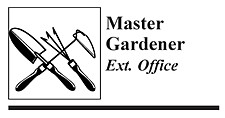June 22, 2006 at 7:31 a.m.
Plum curculio is an insect pest native to the eastern half of the United States. It primarily feeds on plant parts of stone fruits such as plums, peaches, cherries, and apricots. However, it can be a problem on apples, blueberries, and pears. Besides feeding on fruits, the adult curculio also damages them by laying eggs underneath the skin, which creates a crescent-shaped scar on the fruit surface.
The larvae feed and tunnel through fruit. The egg-laying scars and adult feeding punctures lead to rotten and deformed fruit. This results in poor fruit quality and yield. Disease fungi such as those causing brown rot also may enter fruit through curculio feeding sites and destroy fruit before it ripens.
Plum curculio is a beetle in the family Curculionidae (snout beetles or weevils). Adults are dark brownish-grey, with hard warty wing covers and a prominent curved snout. Adults over winter in ground litter or soil either within the orchard or in surrounding wooded lots. Over wintered adults emerge in the spring around apple bloom, and fly to apple trees to feed on apple buds, flowers and young fruit.
Adults are active when temperatures exceed 60 degrees F. Developing fruit is most susceptible to plum curculio injury after petal fall. The spring emergence usually continues for about six weeks. After mating, females begin to lay eggs on the fruit. After hatching, the larvae continue to feed and develop in the fruit. This is complete by late June or early July when they emerge as adults. Only one generation occurs per year in Minnesota, as is the case in most other regions.
I realize that by the time this article comes out it may be too late for a complete insect control program this year. Severe infestations of plum curculio can be controlled with insecticide sprays. However, it must be timed to begin about the time the very first egg-laying scars are seen on the fruits. If using a pesticide, be sure it is labeled for curculio control on edible fruits and follow label directions as to dosage, timing, and frequency of spraying. Do not spray during blossoming since it could be harmful to beneficial pollinators.
Curculios can be knocked out of trees onto a drop cloth by tapping branches with a padded stick. The insect can then be easily collected and destroyed. The drawback of this method is that it must be done twice a day during the growing season to be effective. Picking up and destroying fallen fruit several times a week can help reduce pest populations. Doing this can also help control diseases of stone fruits, such as brown rot and plum pocket.
+++++
The public is invited to learn more about beneficial insects at a FREE class being sponsored by the Chisago County Master Gardeners Tuesday evening, June 27. Bud Markhardt, professor at the University of MN, and member of the Board of Directors for the MN Institute for Sustainable Agriculture and the Organic Advisory Task Force, MN Department of Ag. will be speaking on ‘Beneficial Insects in Your Garden.’ Many who heard him at our Gardening Bonanza in March asked us to have him back. The class will be held at the Senior Center in North Branch June 27 beginning promptly at 6:30 pm. Call the Extension office at 651-674-4417 if you need directions.
+++++
PLANT CLINICS: Volunteer Master Gardeners will be available Mondays from 4-7 at the Extension Office in North Branch at 38780 Eight Ave. to answer your gardening questions. You can also call 651-674-4417 during these hours to speak with a Master Gardener. Samples can be dropped off during the day on Monday if you cannot stop in during clinic hours. Please note MONDAY is the only day you can drop off samples, as there is no longer staff at the North Branch Office who can answer gardening questions.
VOICE MAIL: You can leave a question for a volunteer Master Gardener at 651-674-4417. Depending on the volume of calls, they try to respond within a couple of days. During office hours ask for the Master Gardener voicemail, after hours, select ext. 18.




Comments:
Commenting has been disabled for this item.